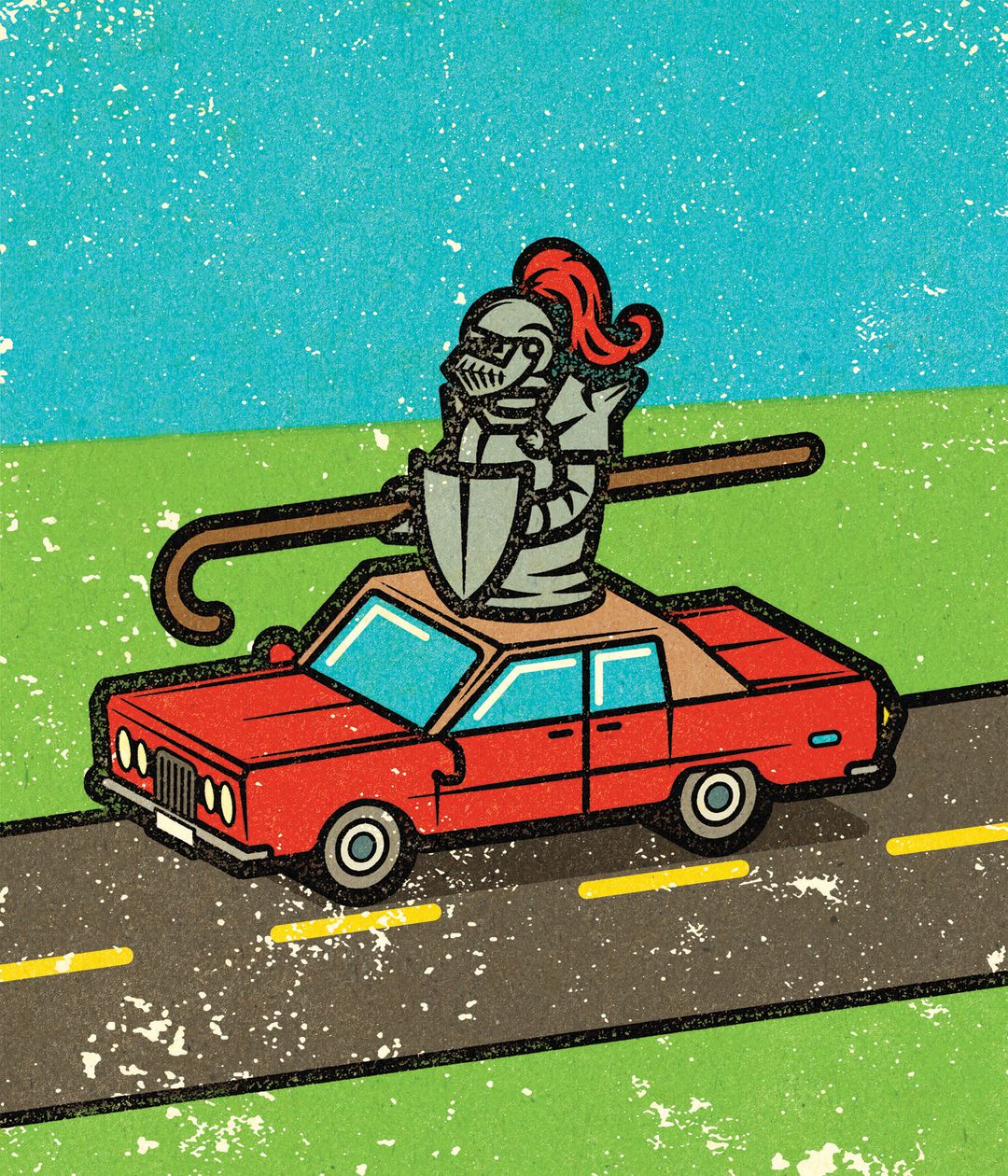When Should a Senior Citizen Stop Driving?

Image: Alexei Vella
What am I doing here? A driving school?
I pull into the parking lot at the Suncoast Defensive Driving School and exit my car. Bill Rowell greets me. He’ll be my “driving skills” evaluator. Good-looking, clean-cut guy two decades younger than me.
I’m here to write this article, but most often, someone thinks an elderly relative is becoming unfit to drive. Grandpa often won’t listen, so Rowell is called to test a driver for needed skills and knowledge. He’s not law enforcement. Courts don’t refer drivers to him. Concerned people with $235 to spend on the tests do.
Rowell says he’s tested people from their 40s to 90s. “No man in his 90s has passed,” he says. “But several women have. When they do well, I ask them: ‘Do you play bridge?’ Those who pass all play bridge at least once a week. It keeps them sharp.”
Those who fail, he says, often react with sadness, even tears. “They fear losing their freedom; they feel another step backwards in age,” he says. And some, like a 95-year-old he recently tested, will ignore his advice. A few weeks after Rowell recommended the man should stop driving, he spotted him behind the wheel of a car.
I’ll have no problem, I tell myself. I’m 76 and got my first license at age 14. In fact, I test drove new cars for more than 20 years, writing reviews for newspapers and the Internet. Rowell has raced Porsche cars all over the world and is a Porsche driving instructor. Yes, he knows how to drive.
Here’s what I think Rowell will conclude: “This man has an extensive history of driving and he should be considered an advanced level driver.”
A lengthy computer test and one-hour drive in Sarasota rush hour traffic will prove, or disprove my self-evaluation.
Rowell is a “car guy,” and for the first 10 minutes or so, we compare cars we’ve owned—and wish we still had. Then it was down to business. I sat at a computer.
I’m ready. I know my stuff. I know that hands go at 10 and 2 o’clock. That I can turn right on red at most intersections. I can tell a stop sign from a yield sign by shape alone.
My first task is to walk about 10 feet. Rowell asks me to put a hand on a table’s end, walk to another table, touch it, and return. This is a simple test of leg strength.
I don’t stumble or stagger, although we both know that aging chips away at balance, strength, flexibility, visual acuity, reflexes. I hope I don’t have to stand on one leg and touch my nose. I’d fall over!
The only part that I flunk measures neck flexibility. I have to sit in a chair at one end of a table, grip the seat base, then swivel my upper body and head to see a computer screen directly behind me. No way. I turned my head as far as I could, which is not far these days. I could not see the computer. Think it’s easy? You try it.
No big deal, Rowell asssures me. I’m “average” for my age. He suggests I put a piece of plastic on my car seat, to make it easy to swivel when I need to see behind my car.
I breeze through tests for memory, high contrast, low contrast, peripheral vision detection of objects, visual search, processing hidden information. But make no mistake, this test was difficult.
Rowell and I walk across the parking lot to a Toyota Prius festooned with Suncoast Defensive Driving School ads. I climb into the driver’s seat. Look for the key to turn. “Press the button,” Rowell says. Ouch. I’ve driven a Prius before and now remember that the electric engine starts and stops with a button press. I press. I check the rear view mirror and both side mirrors, then focus on the rear view camera image displayed on an in-dash screen. “Great invention,” I say.
Rowell says it’s important, yes, but not all cars have one, so don’t come to depend on it. “Adjust the mirrors,” he commands. I do.
“You have blind spots,” he says. I’m puzzled. He informs me there’s a limited view in the rear view mirror, but I need to swing the outside mirrors much farther away from the car. That way, I can create a wider field of view using all three mirrors. I adjust them as he suggests.
We drive through residential neighborhoods, eventually coming to busy Bee Ridge Road. I’m using my turn signals and keeping both hands on the steering wheel.
“Where are your hands?” Rowell says.
“Ten and two,” I reply.
“Wrong position,” he says. “That hasn’t been correct for a decade. If an air bag goes off in the steering wheel, it will slam your hands into your face the way you have them. Now we position our hands at nine and three. And you’re using your left foot to brake. Why?”
I smile. I have a certified race driver beside me. I can show off my knowledge.
“Jim Hall used to tell drivers of his Chaparral race cars to brake with the left foot, accelerate with the right,” I begin. “It took me a long time to learn to do this. I’m faster on the brake this way.”
Rowell said he doesn’t like it. In a panic, I might accelerate as I try to brake. Sorry, Bill, I’m too old to change. I’ll just try not to panic.
After an hour on U.S. 41, the roundabouts of Honore Avenue, the traffic heading home on Bee Ridge, we return to his office. I won’t know results immediately, he tells me. They will arrive by email in a day or two.
So they did. I flunked flexibility. Graded “acceptable” in all other areas.
I skip through the notes to arrive at Rowell’s conclusion: “Mr. Bowden has an extensive history of driving and should be considered an advanced level driver. In my professional opinion, Mr. Bowden’s driving skills are more advanced than 16-year-old drivers with a new license.”
Hey, I could have told him that.



